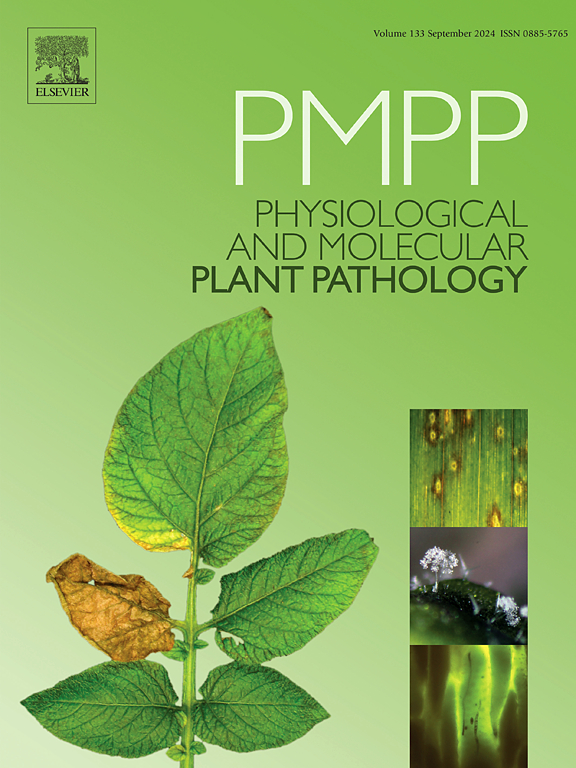土壤病原植物微生物组研究现状及未来挑战
IF 2.8
3区 农林科学
Q2 PLANT SCIENCES
引用次数: 0
摘要
植物的根际、根层和内层是一组微生物,统称为植物微生物组,对植物的健康和保护至关重要。植物对土壤传播疾病的反应受到这一微生物群的显著影响,这些疾病在世界范围内造成了大规模的农业损失。根据最近的研究,利用植物相关微生物群作为一种对环境有益的替代品来替代目前的化学控制方法,有机会对抗这些感染。本文综述了植物微生物组在管理土壤传播病原体方面的研究现状,重点介绍了重要的发现和进展。它研究了资源竞争、抗菌合成和植物防御反应的刺激等过程,通过这些过程,优势微生物赋予植物抗性。尽管取得了令人鼓舞的成果,但在实际应用中使用基于微生物组的治疗方法仍存在许多障碍。其中包括微生物之间关系的复杂性,各种土壤和环境中微生物组结构的变化,以及对可扩展和可靠的应用技术的要求。为了克服这些障碍,未来的研究必须提高我们对微生物群落动态的认识,利用尖端的基因组和宏基因组技术,并将可持续农业方法与微生物组管理技术相结合。这一包罗万象的战略可以改变疾病控制并改善全球粮食安全。本文章由计算机程序翻译,如有差异,请以英文原文为准。
Plant microbiome for soil borne pathogen – current status and future challenges
The rhizosphere, phyllosphere and endosphere of plants are a collection of microorganisms simply called as the plant microbiome, essential to the health and protection of plants. Responses of plants to soil-borne diseases, which cause large-scale agricultural losses worldwide, are significantly impacted by this microbiome. According to recent study, there is a chance to confront these infections by using plant-associated microbiomes as an environmentally beneficial substitute for current chemical control methods. Examining the state of plant microbiome research in relation to managing soil-borne pathogens, this review highlights important discoveries and developments. It investigates the processes such as resource competition, antimicrobial synthesis, and stimulation of plant defense responses by which advantageous microorganisms give plants resistance. Notwithstanding encouraging outcomes, a number of obstacles stand in the way of using microbiome-based treatments in practical applications. These include the complicated nature of the relationships between microbes, the variation in the structure of the microbiome in various soils and environments, and the requirement for scalable and reliable application techniques. In order to overcome these obstacles, future studies must improve our knowledge of the dynamics of microbial communities, make use of cutting-edge genomic and metagenomic technologies, and combine sustainable farming methods with microbiome management techniques. This all encompassing strategy could transform disease control and improve food security worldwide.
求助全文
通过发布文献求助,成功后即可免费获取论文全文。
去求助
来源期刊
CiteScore
4.30
自引率
7.40%
发文量
130
审稿时长
38 days
期刊介绍:
Physiological and Molecular Plant Pathology provides an International forum for original research papers, reviews, and commentaries on all aspects of the molecular biology, biochemistry, physiology, histology and cytology, genetics and evolution of plant-microbe interactions.
Papers on all kinds of infective pathogen, including viruses, prokaryotes, fungi, and nematodes, as well as mutualistic organisms such as Rhizobium and mycorrhyzal fungi, are acceptable as long as they have a bearing on the interaction between pathogen and plant.

 求助内容:
求助内容: 应助结果提醒方式:
应助结果提醒方式:


